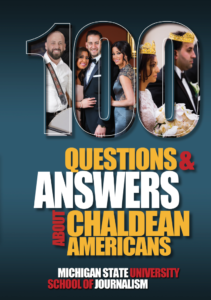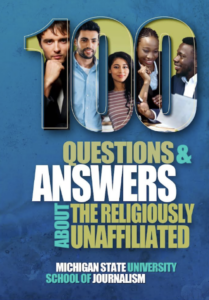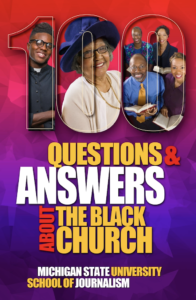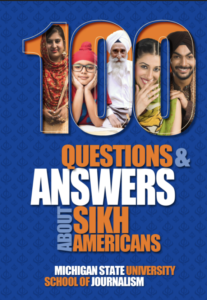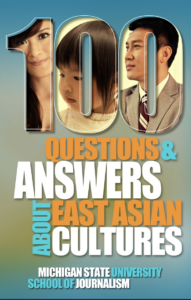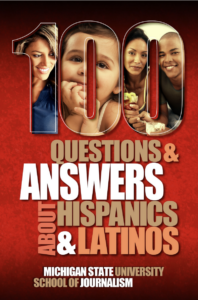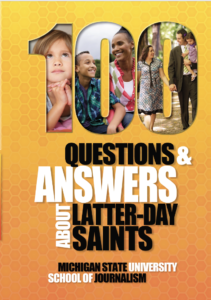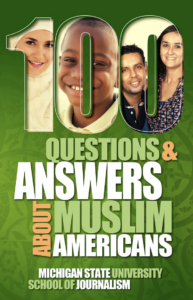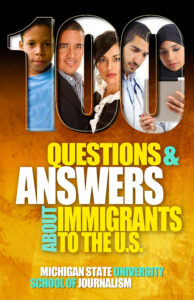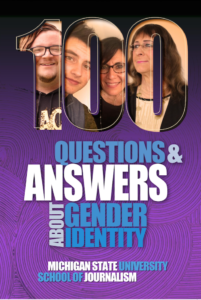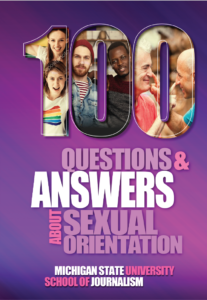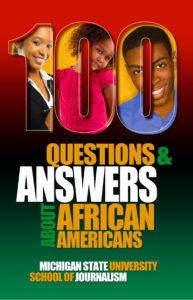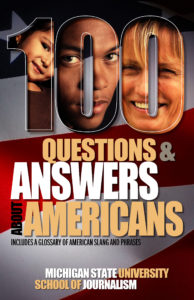These are some of the questions and answers from “100 Questions About Indian Americans.” We offer them as a sample of what the guide is like. You can order the guide with all 100 answers in whatever form you like: paper, Nook or Kindle.
What race are Indians?
Why are there tensions between Pakistan and India?
What religion do Indians practice?
What are the basic beliefs of Hinduism?
What is the Festival of Lights?
What Indian wedding traditions should I be aware of?
Why are some Indians so dark and others aren’t?
Why are so many call center workers Indian?
Why are Indians in America so highly educated?
Where is Bollywood?
Do women have voting rights in India?
What political system does India use?
How do Indians in America vote?
What is a guru?
What is henna?
Why do Indians wear turbans?
What is the snake-charmer stereotype?
Why are Indians associated with curry?
How are gender roles treated?
Are Indians in America well paid?
What race are Indians?
Racial classification in India is difficult. The government discourages classifying people according to racial distinctions and the census there does not gather that information. Anthropologists classify Indians from the north, south, northeast and southeast parts of the country as belonging to different racial or ethnic groups. Intermarriage makes distinctions less clear. Back to top | To order
Why are there tensions between Pakistan and India?
Pakistan was created as a Muslim-majority country separate from India, which is dominated by Hindus and has large minorities of Muslims, Sikhs and followers of other religions. The separation of the two countries, known as the partition, resulted in violent riots as people were uprooted. Many Muslims moved from what is now India to Pakistan and many Hindus moved from what is now Pakistan to India. About 500,000 people died. Conflict still exists over governance of Jammu and Kashmir, a once autonomous state. Many Pakistanis believe it should be part of Pakistan because of its predominantly Muslim population. India states that it belongs to India because it agreed to join the country in 1947. Back to top | To order
What religion do Indians practice?
India is the birthplace to four of the world’s major religions: Hinduism, Buddhism, Sikhism and Jainism. Indians practice many more, but the largest by far is Hinduism. 2001 Indian census data shows about 80% of the population in India is Hindu. Other religions include Islam (13.4 percent), Christianity (2.3 percent), Sikhism (1.9%), Buddhism (.8 percent) and Jainism (.4 percent). Zoroastrianism, Judaism, the Baha’i Faith and other religions are also practiced. Some Indians are atheists. Christianity has practiced been practiced by the Mar Thoma Nasrani church for more than 1,500 years. Back to top | To order
What are the basic beliefs of Hinduism?
Hinduism is a system of beliefs, values and customs that have grown out of Sanatana Dharma, or “the eternal law,” as described in ancient scriptures known as the Vedas. Underlying this system is a belief in “Brahman” (rhymes with Grumman)—also referred to as “the Self” or “Supreme Self”’ or “God”—as an indivisible, indestructible, unchanging, perpetual and all-encompassing force that binds all living things and the universe together. The purpose of life, according to this belief, is “self-realization,” to liberate oneself from the temporal, world of desires and pleasures as experienced by the sense organs; from emotional ups and downs; and from the cycle of life and death, and to recognize our oneness with the divine force—essentially to become one with God. The scriptures describe three main paths to self-realization—selfless action, the acquisition of knowledge, and devotion—but leave it to individuals to follow the path and combination that best fits their temperament, circumstances and station in life. Hindus believe that we remain in this cycle of birth and death—reincarnation—until we attain self-realization. Back to top | To order
What is the Festival of Lights?
Also known as Diwali, the festival of lights is a five-day celebration of the triumph of good over evil. It is celebrated by Hindus, Sikhs and Jains. Diwali or Divali is a contraction of Deepavali, which means “row of lamps.” Originally associated with harvest season, Diwali can include the lighting of small clay lamps. These lamps are kept on during the night and one’s house is cleaned to welcome Lakshmi, the goddess of goddess of prosperity, wealth, purity, generosity. Diwali is also celebrated with strings of lights, fireworks and gifts. Diwali is celebrated on a lunar calendar, so the dates change from years to year on the Gregorian calendar commonly used in America. Back to top | To order
What Indian wedding traditions should I be aware of?
Traditional Hindu weddings can last for days and involve many rituals in Sanskrit, which might be understood only by the priest conducting the service. Ceremonies performed by Indian Americans in the United States are considerably shorter and are designed to be understandable to non-Indian attendees, making it suitable for intercultural or interreligious marriages. Pre-wedding ceremonies include engagement involving oral and written declaration and the arrival of the groom’s party at the bride’s residence, often in the form of a formal procession. Post-wedding ceremonies involve welcoming the bride to her new home. Back to top | To order
Why are some Indians so dark and others aren’t?
Skin color and genetics has been shown scientifically to change in any given geographic area. It is simply a fact of people with a diverse gene pool followed by natural and cultural selection. Back to top | To order
Why are so many call center workers Indian?
U.S. companies outsource many kinds of jobs to India and other foreign countries, but telemarketing is noticeable because it puts foreign workers and Americans on the phone with each other. India has a large pool of English-speaking workers who want the wages call centers will pay them. In recent years, the Philippines has displaced India has the biggest hub of offshore call centers. Back to top | To order
Why are Indians in America so highly educated?
U.S. immigration policies favor highly skilled adults. The Pew Research Center’s Social and Demographic Trends report shows that Indians are one of the most highly educated groups in the U.S. population. While 28 percent of all Americans over the age of 25 have at least a bachelor’s degree, the figure for Indians in America is 70 percent. Back to top | To order
Where is Bollywood?
Although Hollywood has a sign on a hillside, Bollywood is not a specific place. The name is a combination of Bombay, the city now called Mumbai, and Hollywood. Bollywood is a vast pop culture industry. It is the largest producer of movies in the world, ahead of Hollywood and France. Bollywood’s influence is showing up more in U.S. theaters, music and on television shows like “Dancing with the Stars.” Back to top | To order
What is a guru?
Guru means teacher. The term is used in the major Indian religions of Hinduism, Sikhism and Buddhism. In popular English, it means any sort of knowledgeable guide or mentor. Back to top | To order
What is henna?
Henna is a plant used to make ink or hair dye. To make the ink, leaves are ground to powder and mixed with water and lemon juice or oil. The ceremonial application of henna to make designs on the body, usually hands or feet, is called mehndi. Indian women wear mehndi for special occasions such as weddings. The designs start to fade after about a week. Back to top | To order
Why do Indians wear turbans?
People wear turbans for different reasons, and there are different types of turbans. Sikh men wear turbans that peak at the forehead to take care of their hair, which they do not cut, and to promote equality among themselves and to declare their identity. Turbans make Sikhs distinctive in India, where they are a minority. In the United States, Sikhs have been attacked by people who assumed the turbans meant they were Muslims. Most Muslims do not wear turbans, though their religious leaders might wear one. It’s typically spherical or conical. The shape of those turbans varies by country. Men also wear turbans for reasons having nothing to do with religion. Back to top | To order
What is the snake-charmer stereotype?
In several Asian and African countries, snake charmers have entranced audiences and tourists by appearing to hypnotize snakes with an instrument like a flute. The practice, which was not that common, is being eclipsed by other entertainment. As portrayed in American movies and cartoons, it made India seem exotic and backward. Back to top | To order
Why are Indians associated with curry?
As we just read, curry is used in many places. However, some people use references to curry to insult Indians. There is a history in the United States of saying foods from other countries are strange or objectionable. It has happened to Italians, Koreans, Somalis and others. This is done to ostracize people and to imply that their food and, by extension, they, do not belong. Back to top | To order
How are gender roles treated?
Indian families and society have historically been patriarchal. While laws, education and politics have given women greater equality, male domination is still an issue. The women’s rights movement in India has been spurred by violent attacks on women and the legal system’s response to them. Discrimination and sex-selective abortions that favor males are also issues in India. Back to top | To order
Are Indians in America well paid?
Yes. Because advanced degrees are so prevalent among Indians in America, they also earn good wages, on average. According to a 2012 Pew Research Center report, the median household income for Indians was $88,000 compared to $66,000 for all Asians in America and $49,800 for the general population. Back to top | To order
What political system does India use?
India is the largest democracy in the world. Its government is similar to Britain’s parliamentary system. It has a bicameral parliament led by the Lok Sabha, or People’s Assembly, and a prime minister who leads the ruling party or coalition and serves as the head of government. Members of the Lok Sabha are elected by the people. Members of the Upper House, or Rajya Sabha, are mostly elected by state legislatures. India’s indirectly elected president has powers analogous to those of the queen in the United Kingdom or the governor general in Canada. India has dozens of second-tier and local political parties that are represented at the national level. Individual states have their own legislative assemblies. Judicial powers are vested in a Supreme Court as well as several lower circuit courts called “High Courts.” Back to top | To order
Do women have voting rights in India?
The Indian constitution prohibits discrimination on the basis of religion, race, caste, sex or place of birth. Women were given the right to vote in 1935, 15 years after the United States did. Indira Gandhi, daughter of India’s first prime minister, served as prime minister from 1966 to 1977 and 1980 to 1984. Pratibha Patil, a woman, was India’s president from 2007 to 2012. Back to top | To order
How do Indians in America vote?
According to the Pew Research Center, about two-thirds of Indian Americans favor Democrats and about 18 percent favor Republicans. Back to top | To order

